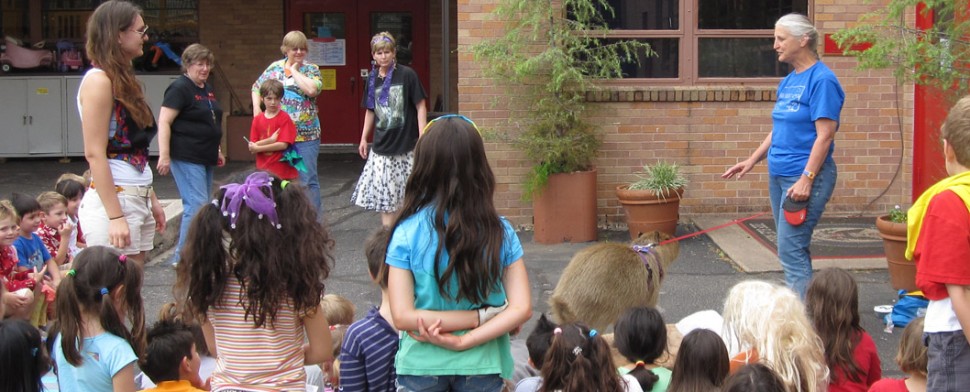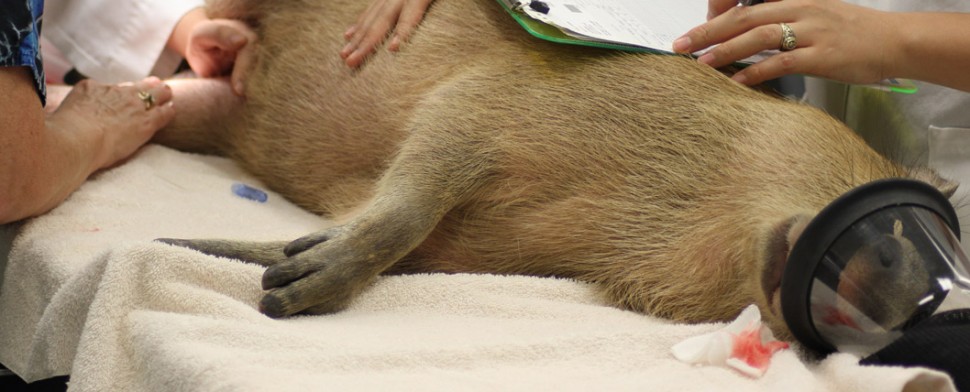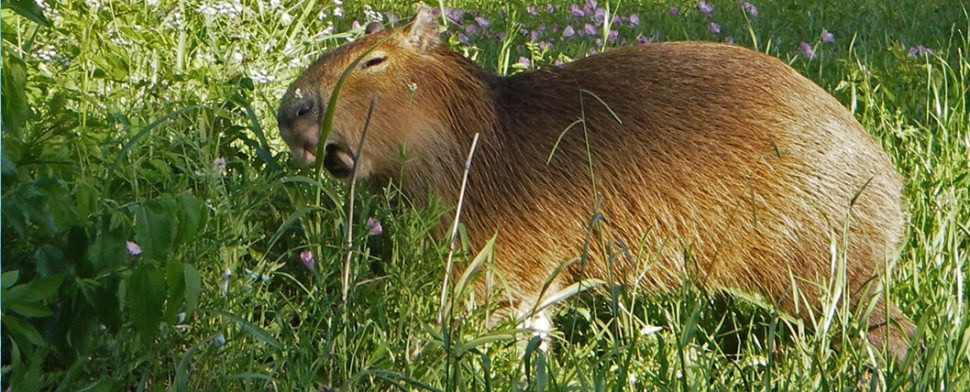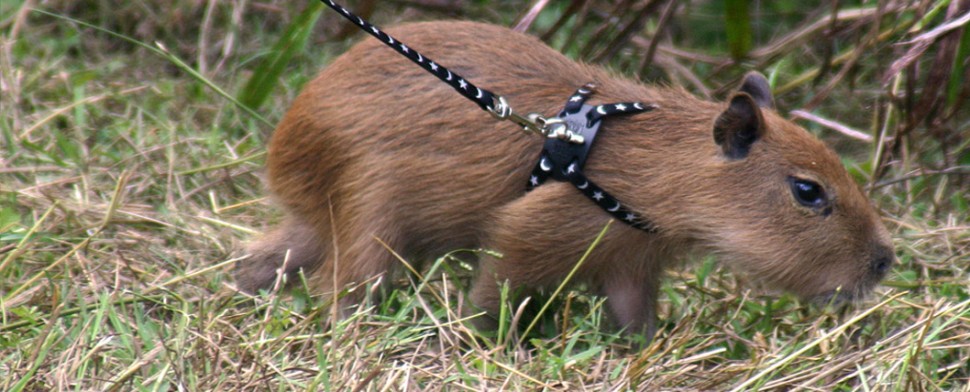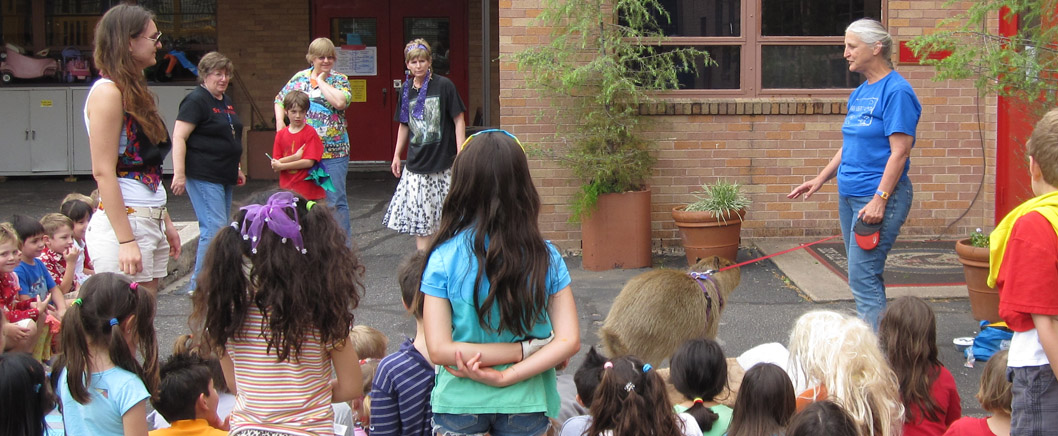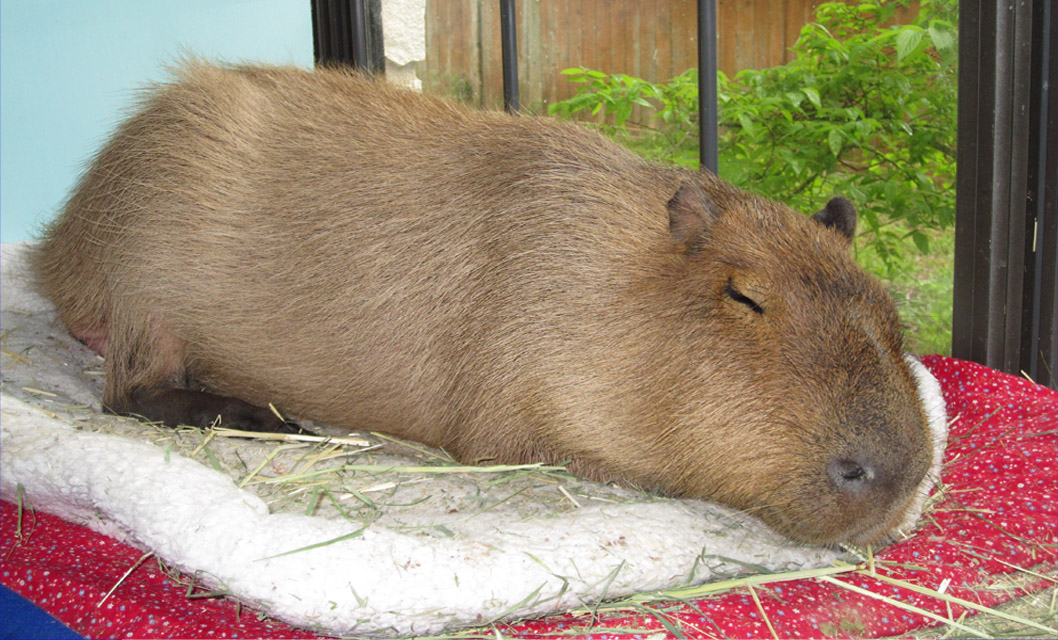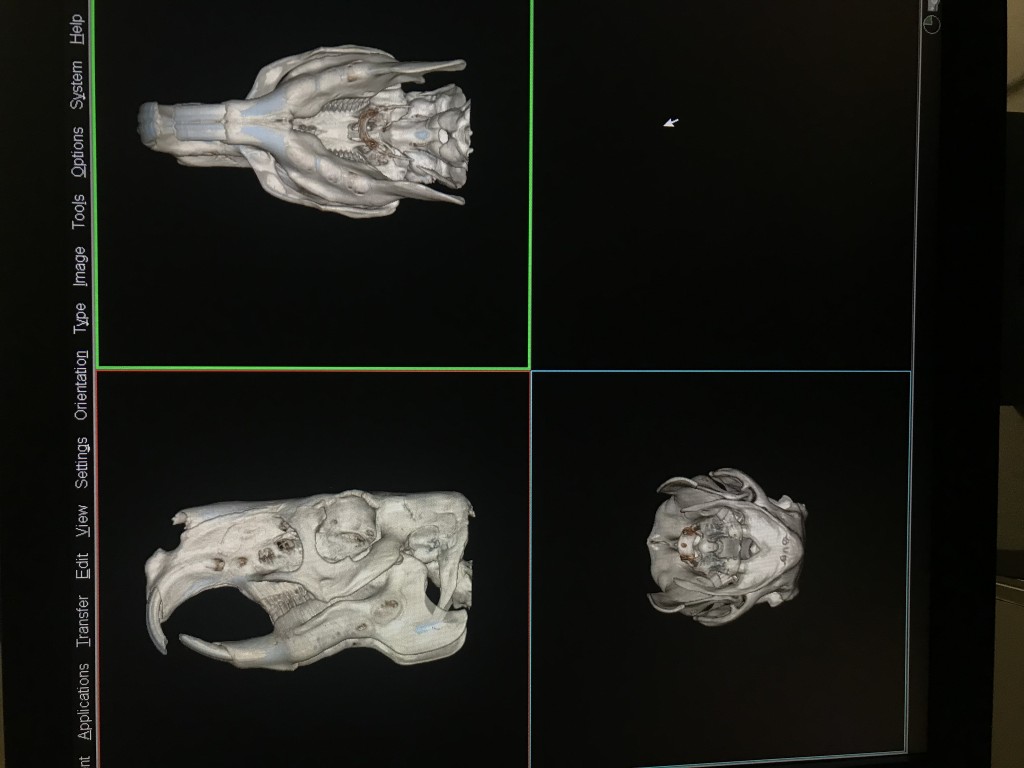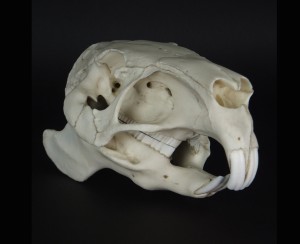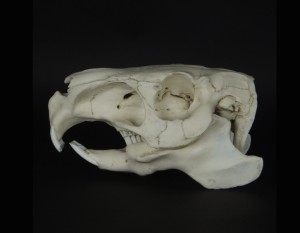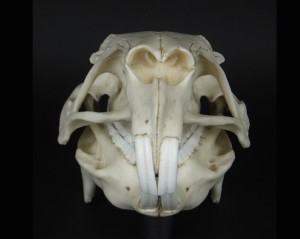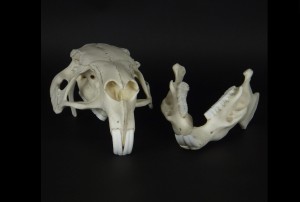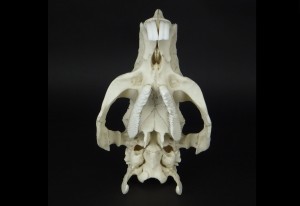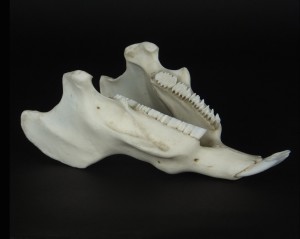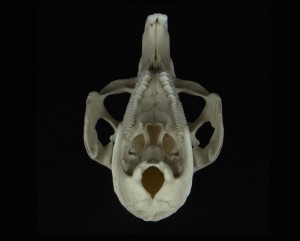Ecology/Biology

While there are many children’s picture books about capybaras, there are few books and scientific articles available. Many of them are in Spanish or Portuguese. We will post documents and scientific articles here as we find them. Additionally, we will provide a list of recommended reading and notable websites. If you know of any good ones, please write to us and let us know! We will also post our collection of photographs of capybara anatomy.
Scientific papers
Studies on capybara veterinary topics:
- ROUS Foundation Weight Study
- Yersiniosis in captive capybaras (2008)
(This paper discusses several cases of hepatitis in capybaras in several zoos.) - Effect of Ascorbic Acid on Food Preference and Consumption in Captive Capybaras (2009)
- Anti-Rickettsia spp. antibodies in free-ranging and captive capybaras from southern Brazil (2011)
- Capybaras and ticks in the urban areas of Uberlaˆndia, Minas Gerais, Brazil (2012)
Studies on captive capybara husbandry:
- Scurvy in Capybaras Bred in Captivity in Argentina (2000)
- Reproductive performance of capybaras (Hydrochoerus hydrochaeris) in captivity under different management systems in Argentina (2006)
- Growth Male integers and female to yearling capybara semi-intensive farming (2006)
Studies on wild capybara diet:
- Damage Caused by Capybaras in a Corn Field (2003)
- Feeding Habits of Capybaras in the Ecological Reserve of Taim (ESEC – Taim) – South of Brazil (2007)
- Feeding Behavior and Crop Damage Caused by Capybaras (2013)
- Feeding behavior and crop damage caused by capybaras in an agricultural landscape (2014)
- Capybara diet in urban environment, municipal park Tingui, Curitiba-PR (2015)
Studies on wild capybara ecology:
- Mammalian Species No. 264 Hydrochoerus hydrochaeris (1986)
- Landscape Ecology of the Capybara in the Chaco Region of Paraguay (1998)
- Non-volant mammals on campus “Luiz de Queiroz”, University of São Paulo, Piracicaba, Brazil. (2002)
- Capybaras in an Anthropogenic Habitat in Southeastern Brazil (2004)
- Relationship between body mass and body length in capybaras (2005)
- Detectability of capybaras in forested habitats (2006)
- Aquatic herbaceous plants of the Amazon floodplains: state of the art and research needed (2006)
- Capybara Social Structure and Dispersal Patterns (2011)
- Capybara distribution in agroecosystems: a cross-scale habitat analysis (2006)
- Ultrasound call detection in capybara(2012)
- Seasonal Pantanal Flood Pulse: Implications for Biodiversity Conservation (2012)
- Effects of Severe Floods and Droughts on Wildlife of the Pantanal Wetland (Brazil)—A Review (2012)
- Non-Volant Mammal Assemblage of Serra do Japi Biological Reserve, Jundiaí, São Paulo (2013)
- Taxonomy, Natural History, and Distribution of the Capybara (2013)
- Density and population structure of capybaras (Hydrochoerus hydrochoerus) in the Central area of the Mamore River (2014)
- Determinants of capybara presence in afforestations of the lower delta of the Paraná River, Argentina (2015)
- A habitat suitability model for capybara at its core area in Argentina (2015)
- Seasonal mortality in capybaras and its relationship with resource availability in the Iberá wetlands, Argentina. (2016)
Other related studies:
- From wild animals to domestic pets, an evolutionary view of domestication (2009)
- Scientists propose using capybara as a natural model for the study of stroke By Karina Toledo (2014)
Bibliography
Lord, R. (2009). Capybaras A Natural History of the World’s Largest Rodent. Baltimore: The Johns Hopkins University Press.
Moreira, J., Ferraz, K., Herrera, E., & Macdonald, D. (2013). Capybara Biology, Use and Conservation of an Exceptional Neotropical Species. New York: Springer.
CT Scan of adult male capybara head:
Anatomical photographs illustrating dentition:


